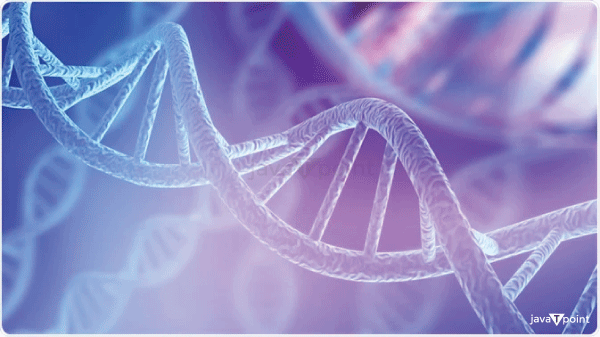Overlapping GenesTwo neighbouring DNA segments that partially or completely overlap one other due to a similar genomic position are referred to as overlapping genes (OLGs). These genes can be found in the prokaryotic, eukaryotic, and viral genomes. 
What is an Overlapping Gene?Multiple proteins are encoded by overlapping genes (OLGs), also known as dual-coding genes, using two distinct reading frames or start codons. Since transcription uses both coding (sense strand) and non-coding (antisense strand) strands, an OLG can result from the overlap of two genes on either the same strand or the opposite strand. As a result of start or stop codon substitutions, an open reading frame may need to be extended. Deletions and frameshifts may also make it essential to remove start or stop codons. The transcription start signal for the second gene, whose transcription initiation site is further upstream, must be placed inside the first gene in order for there to be gene overlapping. Based on the degree of overlap and the shared direction of gene transcription, OLGs may typically be categorised into groups. The gene pair's 3' and 5' termini participate in divergent and convergent overlaps, respectively. Additionally, in embedded overlaps, the participating genes share more than one intron or exon as opposed to nested overlaps, when one gene is completely contained within the intron of the second gene. How Overlapping Proteins are Formed?OLG-encoded proteins are produced de novo through a procedure known as overprinting, as opposed to typical strategies of novel protein production, such as gene duplication or horizontal gene transfer. In this process, the original reading frame undergoes some changes that result in the creation of a de novo reading frame, but the original frame's capacity to code for proteins is preserved. These de novo proteins have been demonstrated in studies to play critical roles in viral pathogenic responses by inhibiting host cell production of interferon, neutralising RNA-dependent gene silencing, and inducing host cell death. Instead, these proteins can impede viral evolution as well as their capacity to adapt to the microenvironment of the host cell by reducing the frequency of synonymous mutations-mutations that alter an exon of a protein-coding gene without changing the amino acid sequence. What are the Benefits of Overlapping Genes?It should go without saying that OLGs can only survive lengthy evolutionary stages when the overlap is proven to be advantageous for an organism, given the requirement of maintaining two functional genes. OLGs are well known for being crucial in modifying the host-pathogen relationship. OLGs in the Viral GenomeOLGs are particularly helpful in viruses in overcoming the restriction of their short genomic size. Importantly, OLGs enable the creation of several proteins from a single DNA segment, which is not conceivable in genetic sequences that are organised sequentially. OLGs were first discovered in the single-stranded DNA virus bacteriophage PhiX174, which has a very tiny genome. The virus's small genome cannot encode all 11 proteins required for viability, pathogenicity, and virulence if transcription proceeds linearly. Therefore, for this kind of organism, gene overlapping is a crucial evolutionary mechanism. According to studies, the majority of the viral proteins generated by OLGs are unfolded or otherwise disturbed and have an extremely uncommon amino acid sequence (amino acids that promote disorder). These proteins are primarily auxiliary proteins that have a role in the pathogenicity of viruses and the spread of infections. They do not promote fundamental cellular processes like viral replication or structural growth. The disordered properties of overlapping proteins can lessen the evolutionary constraints imposed by the overlap since they can quickly transition between multiple structural forms. OLG in the Human GenomeOLGs may be present in the human genome, according to recent studies. Although the precise roles of OLGs in humans have not yet been determined, it is generally accepted that OLGs in humans are not related to the evolutionary constraint of genome size reduction. A quarter of the human genome's protein-coding genes overlap, according to studies. When these overlaps occur, the same-strand overlap occurs more frequently than the opposite-strand overlap. OLGs are found throughout the human genome, however their distribution patterns differ between chromosomes. INK4a/ARF is one of the most effective instances of OLG in the human genome, where the creation of the INK4a protein results from the regular transcription of the DNA sequence. By changing the reading frame of the codon, the gene also generates an entirely distinct protein known as ARF (alternative reading frame: ARF). These two proteins are radically unlike in their structure and intended use. OLG protein products are thought to be crucial in controlling a variety of physiological processes in humans, as well as in halting the progression of disease and lengthening life expectancy. For instance, both INK4a and ARF function as tumour suppressors, although they do so by different tumor-suppressing mechanisms. These genes are frequently reported to be silent or inactive in cancer patients. Additionally, research on mice has demonstrated that the INK4a/ARF gene locus alterations are linked to the emergence and development of tumours.
Next TopicDominant Gene
|
 For Videos Join Our Youtube Channel: Join Now
For Videos Join Our Youtube Channel: Join Now
Feedback
- Send your Feedback to [email protected]
Help Others, Please Share










